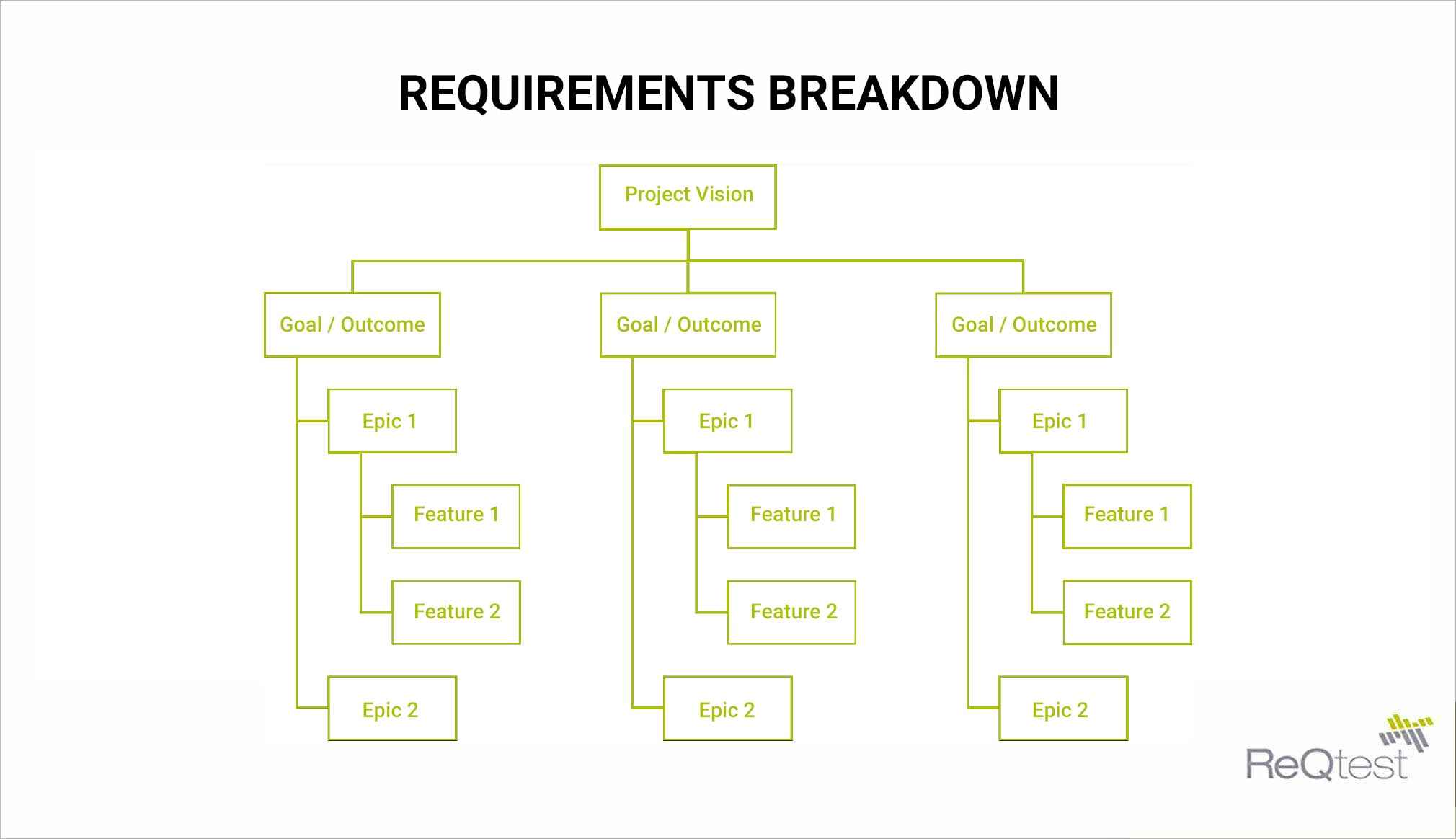December 14, 2020
What Is “Requirements Breakdown”?
In this article, you will learn about requirements breakdown and how this can help improve the operations of your business. Not only will this help you to decide how to manage a complex project, but it will help you to deliver the business value that you expect.
When working on a new project, one of the first steps is to gather all project requirements and define what the project is all about. To organize all the requirements, you will need to do a requirements breakdown.
Requirements break down helps to separate the “what or the high-level requirements of a project from the “how.” Hence, the operations of the project get streamlined.
What Is ‘Requirements BreakDown’?
Typically, a requirements breakdown involves creating a hierarchical tree-like structure that outlines the requirements of a project. These will culminate in the necessary end product.
Requirements are usually tasks or conditions that you must address to complete a project. Perhaps these might be physical deliverables, specific software features, or business benefits that offer valuable contributions to the user.
When building your requirements breakdown structure (RBS), consider the following four requirements:
- Business Requirements.Essentially, these are the general high-level needs that you must cover.
- Stakeholder Requirements.Typically, stakeholders are the most affected by a business project. These are usually more detailed versions of the initial business requirements that reduce risk. For example, how the project aims to meet the business requirements.
- Solution Requirements.Solution requirements address specific measures of success related to each requirement.
- Transition Requirements. Transition requirements are temporarily relevant during the transition period of the project. For example, training activities that might boost the delivery of the project.
To improve clarity, try and maximize details of how you will meet these requirements as this will help keep everyone on track. This can be enhanced with a requirements workshop that answers questions and avoids any misunderstanding. At this stage, it may not be necessary to outline how you will deliver each requirement, just what they are.
Why Is A Requirements Breakdown Important?
Here are the reasons why you should care about requirements breakdown:
Meeting Necessary Needs
A requirements breakdown ensures that the project will meet the needs of all relevant individuals by the end of it. It helps plan the delivery and improves the efficiency of operations.
Customers, stakeholders, and sponsors all rely directly on the outcome. You must consider the outcome of the project when designing your breakdown.
Without a requirements breakdown, individuals may end up performing non-value-added work. Not only is this a waste of both time and resources, but it can be misleading and cause several problems.
Maximizing Efficiency
For established businesses, similar projects have likely been performed in the past. A documented history of such efforts can act as an example. Look at what worked well, and what did not. How can you tweak the latter to improve the outcome this time? Furthermore, can what worked last time be implemented this time as well?
Historical efforts should shed some light on what requirements will be necessary for your current or next project. These can be very helpful in the process of deciding how to manage a complex project.
If your business is in such a position, you will likely have an existing framework with which to plan your requirements breakdown. However, if you are not, there are several ways to create one, which we discuss later on in this article.
Ensuring Project Success
Without a clear methodology, the project outcome can suffer markedly. A lack of clarity leads to guesswork, potentially compromising on success.
By clearly establishing the goals and solutions through a breakdown of requirements, the chances of success skyrocket.
To enhance this, define the exact dates of project completion as well as when each requirement has been produced. Such a timeline provides a structure for your delivery team, ensuring that they finish each part on time and thereby prevent delays.
Top Tips For Breaking Down Requirements
To begin with, you should separate your breakdown of requirements into two levels. At the highest level, consider what is an acceptable solution. Follow this with a hierarchical list with a more detailed description of each requirement. It will be the foundation for how you structure your project management approach.
Solution
It should be your desired outcome. Ideally, this follows after you have developed your business case through historical research and identification of resources.
Requirement
As discussed, these are the necessary and sufficient steps needed to reach your solution. Usually, a requirements breakdown will include 6-12 of these. They can be further divided into decomposition levels.
Decomposition Levels
The highest level of decomposition incorporates the functions that must be performed to meet the related requirement. It may change throughout the project. However, you must proceed on the basis that this is the final list and adjust as necessary as you progress.
You can break this down into sub-functions, which further define the higher levels of the breakdown. Try to be as detailed as you can initially, but these also can become more complex as the project progresses.
Furthermore, consider how these functions are typically performed in day-to-day business operations. These are known as processes and are the penultimate breakdown level.
Finally, you can break down your requirements into features – the lowest level of decomposition. These are the visible enhancements and characteristics of the entity that they describe.
Final Thoughts
A requirements breakdown is an essential step in any project. It helps to detail all the requirements that the project aims to meet. Creating a clear breakdown will help to keep everyone involved in the project on track and help prevent errors or misinterpretations of requirements.
Hopefully, this guide has given you the idea of what a requirements breakdown is and why it’s important. With a strong focus and goal in the mind of project coordinators, you will achieve your solution successfully and efficiently!
Share article
